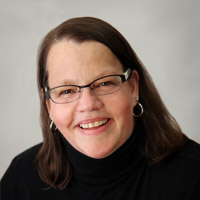A new editorial co-authored by a faculty member at the University of Colorado College of Nursing asserts the severe and growing shortage of nursing educators nationwide may be partially addressed with reflective practice, or taking the time to look back and assess results in order to consider alternative actions for the future. It’s a lesson in history. In 1973, author Robert Heinlein wrote “A generation which ignores history has no past and no future.”
“Embedding a habit of reflection helps build emotional intelligence amid self-awareness to intentionally rethink actions to build a more positive outlook to see the bigger picture to sustain, rather than deplete one's inner resources,” said the editorialists.
The editorial, Faculty Reflective Practice: Building a Thriving Academic Environment, by Gail Armstrong, PhD, DNP, ACNS-BC, RN, CNE, FAAN of the University of Colorado College of Nursing at Anschutz Medical Campus and Gwen Sherwood, PhD, RN, FAAN, ANEF of the University of North Carolina at Chapel Hill School of Nursing co-authored the editorial in the July 2023 Journal of Nursing Education.
A healthcare crisis
The authors highlight the shortage of nurses in the US and of those who teach them. Experts found the number of nurses decreased by more than 100,000 between 2020 and 2021- the largest drop in the past four decades. Experts are also forecasting a “significant RN shortage in 30 states” through 2030. That shortage has been partly created by the problem of not having enough teachers.
According to the American Association of Colleges of Nursing (AACN), nursing schools turned away 92,000 qualified student applicants because of budget constraints, increasing job competition from clinical sites, and a lack of faculty. The AACN found there is a national nurse teacher vacancy rate of 8.8%. Studies have found workload issues, demands of teaching, faculty turnover and increased student demand have contributed to faculty burnout. That fatigue leads to less engagement, lower motivation and diminished creativity, studies show.
New solutions
Some states like Colorado are offering $1,000 tax credits for health care professionals willing to teach. But Armstrong and Sherwood argue a more substantive approach to improve faculty culture is reflective practice.
“It is a well-recognized growth strategy that looks backward to look forward by critically examining experience to consider alternatives in future circumstances,” the authors wrote.
“Reflective practice is conscious, deliberate, and systematic in describing a meaningful event by asking questions about how it aligns with one's beliefs, values, and practice to make sense of the circumstances.”
In fact, studies show reflective practice has been used successfully by nursing students for years to “decrease their stress and anxiety and increase their learning, competency and self-awareness.”
The authors say it is time for faculty to also try reflective practice formally in groups or informally by thinking or writing about problems and potential solutions. Individual reflective practice by faculty can lead to a collective, shared practice with larger groups of faculty. Some faculty make reflective practice a regular part of their faculty meetings.
“When each individual faculty member is committed to increased self-awareness, the character of the larger nursing faculty may be transformed,” the authors said.
The authors recommend faculty try the practice in three ways: before taking action on a plan, in a huddle to align action, and in debriefs to learn what went well and what can be improved in future situations.
Reflection can give teachers a “broader and deeper lens for understanding” and “profound insight” with regular practice, the authors said.
With robust widespread practice, educational leaders suggest reflection will contribute to a clearer alignment between faculty members’ values and their work, which ideally will keep faculty in place to teach the next generations of healthcare workers.
“As a time-tested, reliable practice for nursing students, it is time for nursing faculty to excavate the treasures of this tradition for their own benefit,” said Armstrong and Sherwood.



